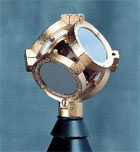
What Works
|
What Doesn't Work
|
Ambisonics is best described as a directional audio recording and reproduction technique that is capable of encoding sound periphery (a full sphere soundfield centered around a single listening point) in as few as 4 channels. It is based on the notion that the direction of a sound source in relation to a listener can be decomposed and faithfully represented by its orthogonal (X, Y, Z) components. The first-order Ambisonics B-Format uses four channels labeled W, X, Y, and Z. The W channel is a non-directional component measured with an omnidirectional microphone. The X, Y, and Z channels are directional components that correspond to three figure-eight microphones in a right-angle configuration.
High-order ambisonics (HOA) adds additional recording channels to achieve greater localization accuracy and higher flexibility for playback in large environments. HOA research also begins to converge with WFS (wave field synthesis) research, as both aim at physically reconstructing the soundfield. The difference lies in HOA's origins in ambisonics, where the goal is not to recreate the entire soundfield, but to recreate an accurate soundfield at exactly the listener's location.
 A 4-channel cardioid ambisonic mic
|
Ambisonics has seen limited application in consumer audio electronics as an alternative to other multichannel formats such as quadraphonics and 5.1 channel surround. High order ambisonics is currently being applied in acoustic holophony research.
Matt Montag 2010